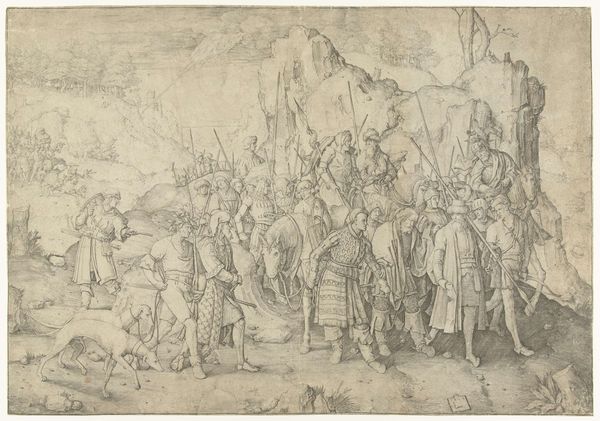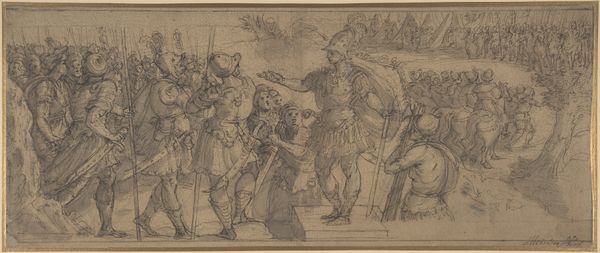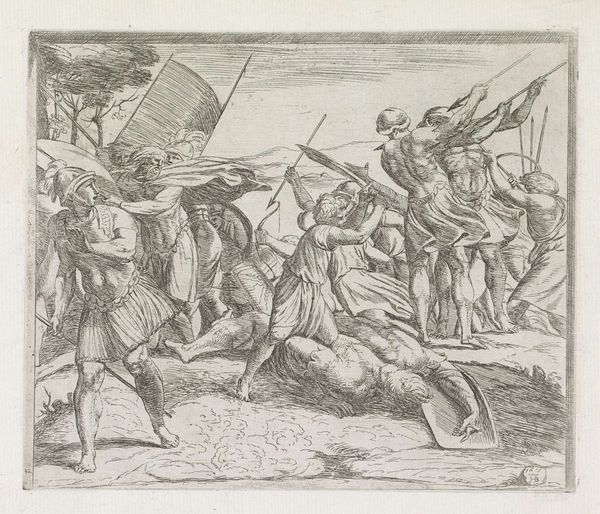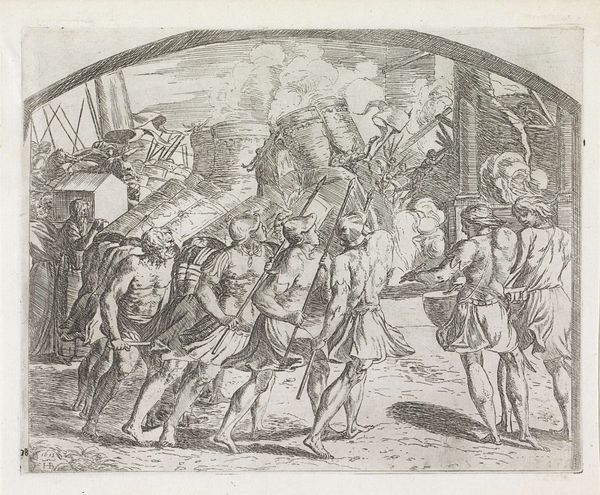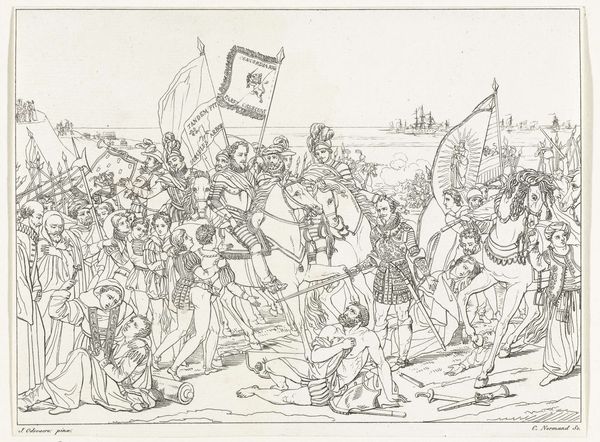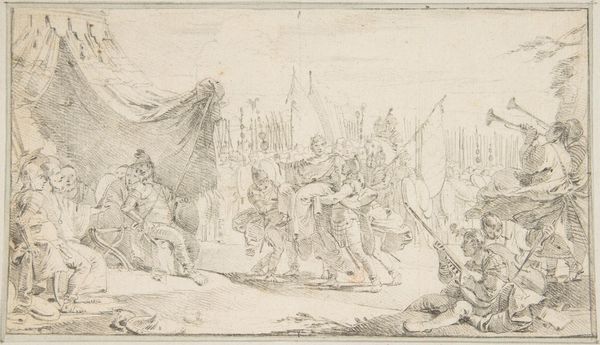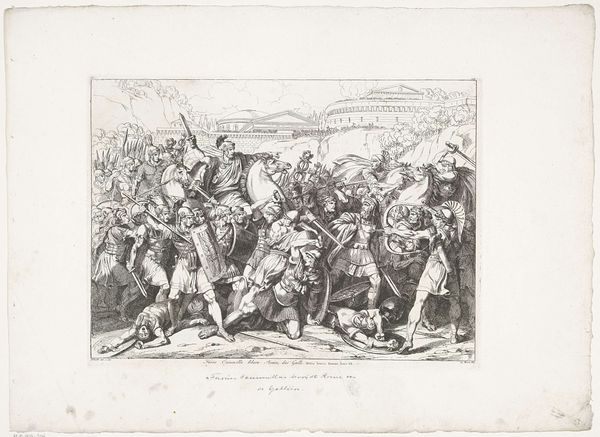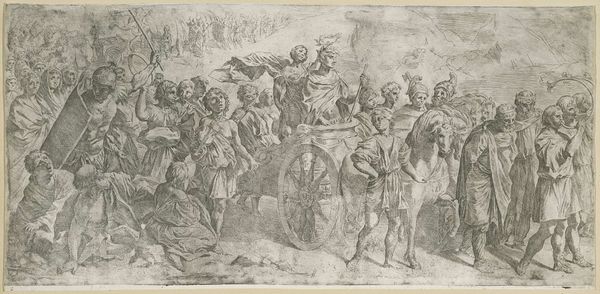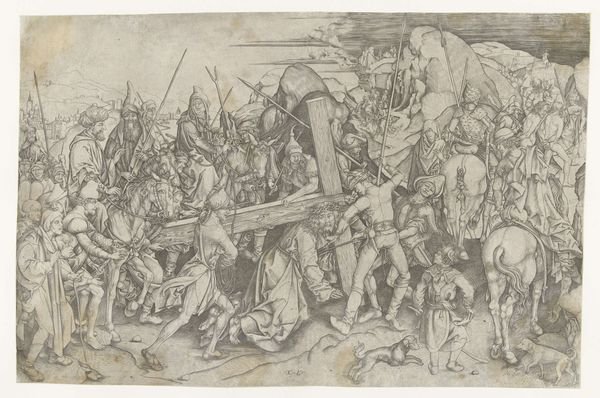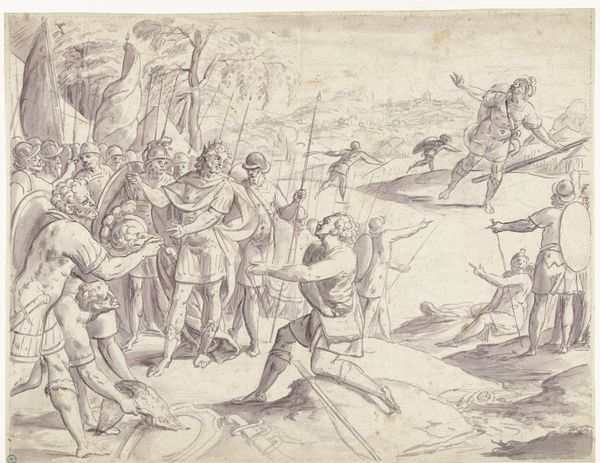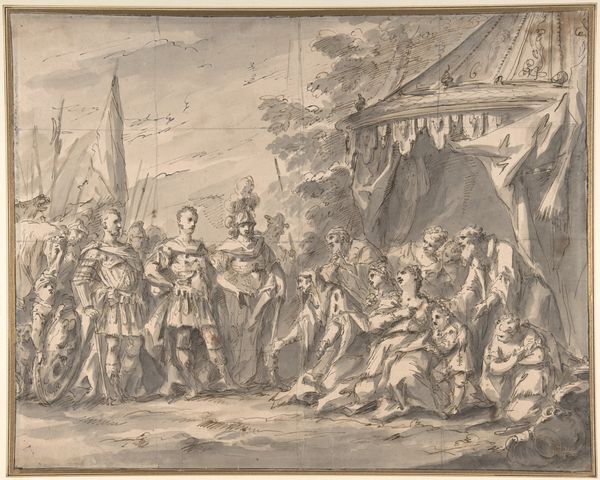
Dimensions: height 430 mm, width 535 mm
Copyright: Rijks Museum: Open Domain
Curator: Here we have a drawing titled "De Nachtwacht" made in 1762 by Hendrik Pothoven and it is housed right here in the Rijksmuseum. Pothoven rendered it in graphite on paper. Editor: It looks like a dream half-remembered, fading into the morning light. Such incredible detail rendered in such a fragile medium. Curator: Fragility is interesting, especially when considering its subject: a militia, robust and ready for civic defense. The use of graphite allows for nuanced tonal variations, almost like a preliminary study for a more ambitious, probably painted project. Editor: A study it may be, but there’s an immediate quality, a sketch-like urgency, that captures a restless energy. It feels more intimate somehow. Did Pothoven perhaps focus more on the individual faces within this group dynamic? Curator: He definitely paid careful attention to rendering different textures, from the gleam of polished armor to the soft folds of the clothing. As a work on paper, "De Nachtwacht" enters the discourse of drawings gaining prominence within the Dutch Golden Age – as more than mere preparations for painting. Editor: Absolutely, there's an artistic choice here, almost like choosing to whisper a story instead of shouting it. I wonder what the paper itself would tell us, where was it made? What was the production process like back then? Curator: The availability of paper production greatly influenced the feasibility and scope of drafting projects. Similarly, the graphite itself – its sourcing, refinement, distribution – all played a crucial role in the work's very existence. Consider how those materials and their access shaped the means for artistic expression. Editor: And what they allow us to experience centuries later! It feels as though the entire scene breathes softly on the page, a phantom echo of the original company readying for their nightly patrol. This single artwork tells countless stories, both seen and unseen, and offers insight into not only a time gone by but into ourselves. Curator: Yes, tracing the journey from the source of the raw materials to the final artistic statement opens up layers of context and meanings. We have a richer understanding by looking beyond the surface representation.
Comments
No comments
Be the first to comment and join the conversation on the ultimate creative platform.
